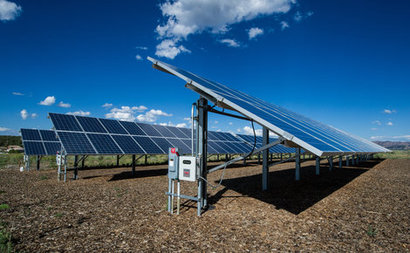
In a letter to Acting Minister for Climate Action Alasdair Allan MSP, the body’s chair Josh King noted that there were 21 percent more air source heat pumps (ASHPs) installed across the UK in the first three months of the year compared to the same period of 2024. “However, Scotland experienced a worrying fall of 13 percent,” the letter says, quoting figures from standards body MCS.
Furthermore, 66 percent more ASHPs were installed per household in Scotland than the UK in Q1 2024. That has since fallen dramatically to only 19 percent more.
However, “Solar and battery energy storage technologies can play a critical and immediate role in facilitating Scotland’s transition to low-carbon heating and transport,” King wrote. In combination with heat pumps, they can greatly reduce home running costs. A Solar Energy report from 2022 put the potential benefit at several hundred or even thousands of pounds per year.
The message comes as the Scottish Government considers revisions to the Heat in Buildings Bill to ensure an affordable and just transition to low carbon heating. A new version of will send “a strong signal to homeowners, landlords and other building owners on the need to prepare” for new heating systems, while also making provision for energy efficiency standards for owner/occupier and non-domestic properties, those for private rented accommodation being introduced via existing regulations.
“The solar industry stands ready to scale rapidly to support Scotland's decarbonisation ambitions” said Mr King. “Indeed, March 2025 marked a record-breaking month with over 21,000 MCS certified solar installations UK-wide, nearly 2,000 of which were in Scotland. Such numbers have not been seen for a decade. Yet growth in Scotland remains constrained due to the wait for clear policy direction for solar and storage.”
In the summer of 2023, Home Energy Scotland withdrew stand-alone loans for solar energy systems on homes, without warning. Up to £11,500 had been available, in the form of grants and interest-free loans to fit solar, battery and heat pump technologies together. A year later and just as abruptly, the body announced that it would no longer offer loans for solar panels or battery energy storage at all.
A Scottish Solar Vision, expected to set a goal to deliver between four and six gigawatts of solar generation capacity at all scales by 2030, was announced in October 2023. It remains unconfirmed.
Backing the creation of more solar-powered homes and businesses would not only bring down bills, it would also make the adoption of heat pumps more likely. The public has much great confidence in solar technology, with 68 percent of owner-occupiers saying that they would probably or definitely install solar panels or had already done so, compared to 25 percent for heat pumps.
“Solar energy should not just be considered as part of a package to cut running costs” added Mr King. “It is a gateway to further energy efficiency upgrades. Households with solar panels are much more likely to switch to electrically-based heating in the future than those without it.”
A recent report from the Scottish Government’s Green Heat Taskforce says that lessons should be learned from the success of iChoosr, which has collaborated with over 200 local authorities to offer discounted residential solar installations. It adds that a “critical avenue” for action would take inspiration from Whitehall’s Warm Homes Plan, which combines grants and low-interest loans to support investment in insulation, solar panels, batteries and low-carbon heating systems, with funding to upgrade 300,000 homes a year.
For additional information:

